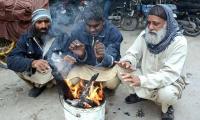and hype up the skewed, inequality-enhancing ‘Gujarat model’ to win upper-caste-upper-class votes.
The supercharged campaign manufactured a larger-than-life image for Modi. But he failed to draw crowds, so Kiran Bedi was drafted in, along with the entire Modi cabinet, 120 MPs, and one lakh RSS volunteers. Yet, it’s futile to blame Bedi or campaign-specific factors for the BJP’s rout.
The BJP was trounced primarily because Modi’s popularity is declining nationally, and the BJP is seen as arrogantly pro-rich, sectarian, divisive and loutishly communal. Modi has failed to deliver on his promise of ‘less government, more governance’, and more jobs – a hugely important (if mythical) lure. His big-ticket schemes including ‘Swacchh Bharat’, Jan Dhan Yojana and ‘smart cities’ are all empty slogans.
Modi is increasingly seen as elitist and vain. He changes his attire three times a day. His Rs 10-lakh suit with his own name woven into its fabric has been described by a British paper as the Emperor’s “new clothes” needed to provide “reassurance” to a “self-aggrandising and insecure megalomaniac”. The suit will damage him more than ‘India Shining’ hurt the BJP in 2004.
Modi is offering enormous tax-breaks to Big Business, opening up reserved forests to predatory mining and industry projects, dismantling environmental regulations, and raising prices of essential medicines by amending patent laws to please the US.
Worse, Modi is seen as anti-poor. His government has raised rail fares, and failed to lower petrol/diesel prices in line with falling crude prices. It has savagely cut the National Rural Employment Guarantee budget, and is preparing to severely restrict the Public Distribution System for food and remove such meagre labour protection as exists.
The government’s pro-corporate land acquisition ordinance will displace millions of farmers without public hearing and social or environmental impact assessment. This is one reason why the BJP lost all 14 seats in rural Delhi; in 2013, it won 13.
The Delhi defeat is the culmination of the BJP’s immediate post-May decline, relative to its Lok Sabha showing. It performed poorly in some 50 Assembly by-elections, followed by municipal elections. More vitally, its showing was below-par in elections to the Maharashtra, Jharkhand, Haryana, and Jammu and Kashmir assemblies.
In Maharashtra, the BJP aimed at winning a majority. It spurned an alliance with the Shiv Sena, but had to crawl back to it to form the government. In Jharkhand, its score plummeted from 12/14 Lok Sabha seats to 37/81 Assembly seats. In Kashmir, its boastful ‘Plan 44+’ – to win a majority in the 87-strong assembly, including seats in the Kashmir Valley – crashed; it won 25 seats, all in the Jammu region.
Such an early downturn in state after state is highly unusual within the first months of a party winning a national election – in the BJP’s case, with only 31 percent of the national vote.
Meanwhile, the Sangh Parivar created serious insecurity among numerous religious and ethnic groups, including northeastern Indians, described in the BJP vision document as “immigrants”. Its hysterical anti-minority campaigns, including ‘ghar-wapsi’ and Godse-worship, are tacitly backed by BJP bosses. Modi has failed to restrain the campaigners. There’s growing realisation that at work here isn’t the BJP’s ‘lunatic fringe’; it’s the BJP itself.
The AAP was able to project itself as a credible alternative, indeed as a pro-poor moral force, of the kind the Left once was – irreverent towards authority, militant in opposing hierarchy and privilege based on birth, passionately egalitarian, and ready to bring ‘the world’s largest democracy’ down to earth through expanded rights for people and greater public accountability for rulers.
The exuberance the AAP’s victory has generated among the underprivileged has to be seen to be believed. The AAP’s triumph will alter national political equations. It will revive the opposition, including the Janata Parivar, with an impact in Bihar and Punjab (the AAP has four MPs here) where assembly elections are due soon.
The AAP’s victory has further marginalised the Congress. This isn’t a good thing for Indian democracy, which needs a middle-of-the-road umbrella party with multiple currents in it, in place of a system dominated by a strong right-wing party like the BJP. But the Congress must realise that the Gandhi family, in particular Rahul, is a millstone around its neck and cannot rejuvenate it.
The Left and regional parties will do well to learn from the AAP’s local democracy-based approach, its frequent consultation with mohalla committees, and frankly, from its unabashed populism.
Populism is a much maligned word in the Indian media. But in its original, authentic sense – prioritising redistribution over growth and attacking the political establishment “for being self-serving and deaf to the needs of the ordinary citizen” while advancing the agenda of social justice – it’s a healthy thing. We need more populism and less pandering to the rich and powerful.
The AAP is planning to target Rajasthan, Madhya Pradesh, Chhattisgarh and Odisha, which have electorally become single-party states. How it fares there will be determined by its performance in Delhi. To deliver on its promises of subsidised water and power, the AAP should avoid hasty decisions and consult people-centred and equity-oriented experts from Prayas Energy Group (Pune) and Yamuna Bachao Andolan.
The AAP must also be more open to working with other parties and civil society groups on issues of broad popular concern, like secularism and protection for the minorities, the land acquisition law, and rights to food, housing, healthcare and education. That’s where its future lies.
The writer, a former newspaper editor, is a researcher and rights activist based in Delhi. Email: prafulbidwai1@yahoo.co.in
There are over 11 million Pakistanis settled abroad, out of which around six million work in Gulf and Middle East
This year alone, US Treasury would have to roll-over $10 to $14 trillion in maturing short-term debt
Tear gas no longer marks just protest sites; it paints entire cities as battlegrounds but then again, PTI did it first
Political structures and governance systems have been central to economic and social development
It is confirmed now 40 Pakistanis had died after boat of migrants had capsized in sea near Greece
Many people believe that in future, AI will play an even more significant role in their lives







